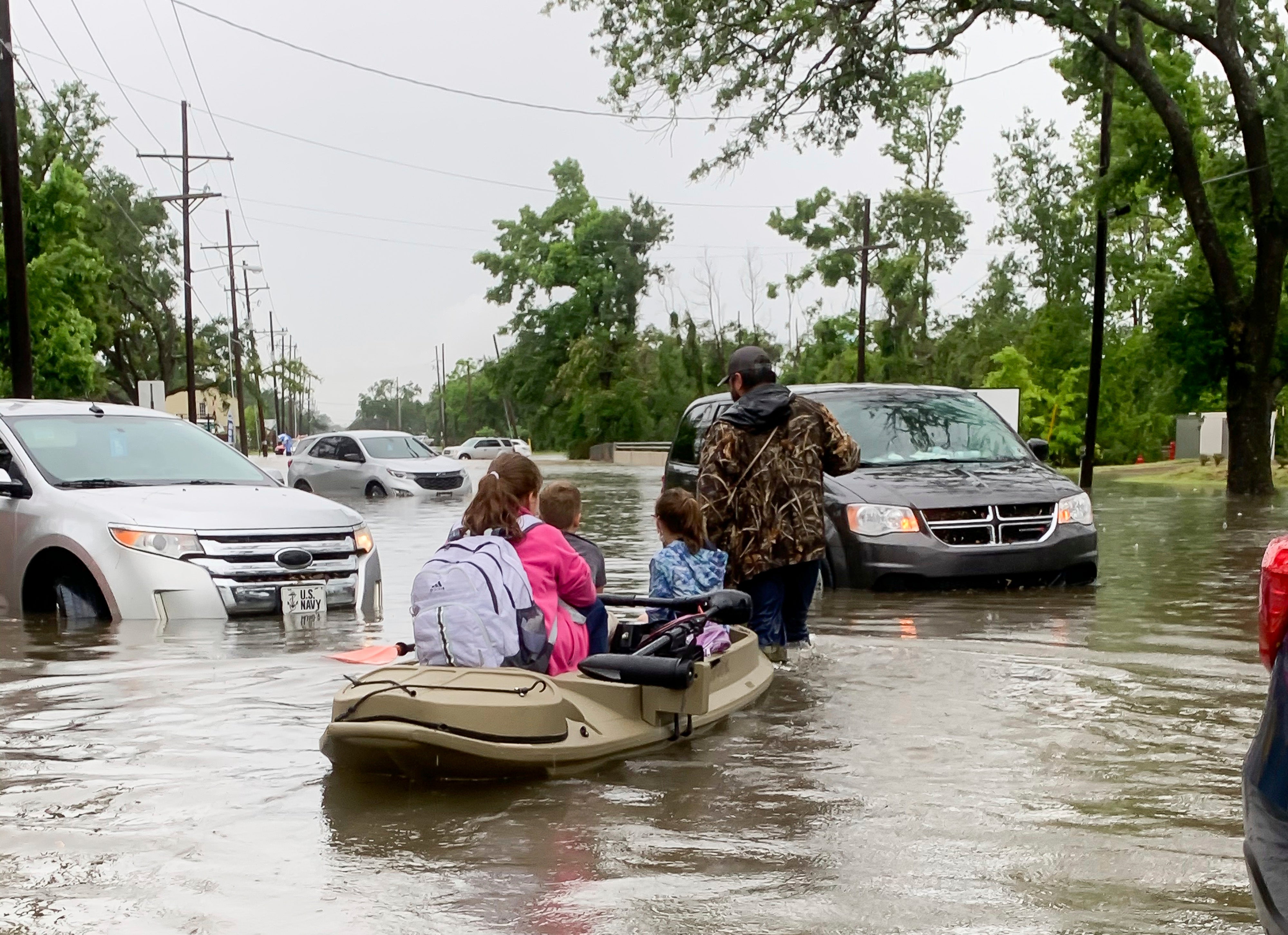Households need help if they are going to deal with the climate crisis
This is no longer an issue for the future. It is clear that in certain geographies, the impacts are already putting extreme stress on families


Here are a few statistics from the Federal Reserve that capture the vulnerability of Americans to financial emergencies. The first you have probably heard before—that forty percent of American adults would have to borrow $400 (£282) dollars to cover an emergency expense.
For many Americans, this emergency expense often comes in the form of medical bills. In 2019, one in five Americans had an unexpected medical bill between $1,000 and $1,999 dollars, and 18 per cent of Americans had debt for unpaid bills either for their own medical expenses, or the medical expenses of a family member. Insured Americans are not spared from medical debt.
The Census reports that sixteen percent of Americans who have health insurance also have medical debt, and twenty-two percent of insured Americans reported foregoing medical procedures due to their costs. The consequences of this financial strain are far reaching. Many Americans report that medical debt has kept them from achieving other life goals, such as buying a home or saving for retirement. What will happen, then, to lower and middle-income American households when the climate crisis adds another layer of emergency expense to household finances?
This is no longer a question for the future. My organization, the Climate Cost Project, looks at the financial impacts of the climate crisis on households. It is clear that in certain geographies, the impacts are already putting extreme stress on household budgets within entire communities. As with health emergencies, we see that families are not well protected, even when they are insured.
For the last year, we have been doing survey work looking at the financial impacts of flooding in Horry County, South Carolina between 2015 and 2020. Horry County is located on the coast. The inland region of the county is characterized by multiple water sheds and five rivers. The region has always been prone to flooding, but in the past five years the problem has become markedly worse.
Since 2016 Horry County has been directly hit by two major hurricanes and been affected by rain and wind from eight additional hurricanes and tropical storms. As a result, many houses that might have expected to flood once over the lifetime of their mortgage have seen repeat flooding. Further, even people who live outside the high-risk flood zone have experienced repeated flooding in the last five years, when in decades before, they never saw flood waters near their house.
The financial consequences of these changes in patterns have been devastating. Respondents to our survey reported that the mean out-of-pocket expense for families from flooding was $20,000. This was from a survey sample where the mean income was the $36,000 a year. Further, as result of the high costs of repairs, more than half of the respondents reported not replacing or repairing damaged parts of their house. The mean value of unrepaired damages was $7,500. People with insurance or who received assistance from the Federal Emergency Management Agency (Fema) tended to pay more on average than those without coverage because people without coverage tended to live in areas that were less affected by flooding.
Given that a $400 emergency expense is a stretch for many families, it is not surprising that the consequences of these enormous costs are devastating for the affected people. Sixty per cent of the people in the survey had to take on credit card debt to cover their out-of-pocket costs.
People who were able to pay without debt reported depleting their retirement accounts and children’s college accounts. But perhaps worst of all, this reallocation of money went into houses that, in almost all cases, were losing value because they flooded multiple times. The result was that people had spent their money—and money they didn’t have—to restore a home that was declining in value. Almost all people reported that they did not feel safe in their home, and that they were afraid it would flood again.
While access to affordable health insurance has broad societal support, affordable flood insurance is often viewed as a moral hazard – government money spent to allow people to build houses in places where they should know better. The moral hazard narrative leaves no room for the reality that affordable housing is more likely to be located in a flood zone, and that the changing climate is now repeatedly flooding the homes where, in earlier decades, the flood risk was manageable, or where they did not flood at all.
The Government Accountability Office (GAO) estimates that the number of repeat-flooded properties in the United States has increased by 43 per cent in the last decade, to 214,000 households. The GAO uses insurance claims to estimate repeat flooded households. But many households don’t file claims, so we know that this number is underestimated.
While healthcare reform focuses on expanding coverage, flood insurance reform focuses on getting prices to reflect the real risk of the property. The reform is focused on the solvency of the program, not the needs of the people it serves. Raising premiums on families who are financially and physically going underwater will no more solve their problem of flooding than removing health insurance from cancer patients will cure their cancer.
American households are terribly vulnerable to financial emergencies even without climate impacts. It is clear households in the United States are going underwater faster than ever. They need help. Flood insurance reform and resilience planning will need to take into account the fragile situation of America’s middle class. Without financial resilience at the household level, America will struggle to weather the coming storms.
Sieren Ernst is CEO of the Climate Cost Project – a data and documentary project that aims to bring to light the costs of climate change in American communities
Join our commenting forum
Join thought-provoking conversations, follow other Independent readers and see their replies
Comments
Bookmark popover
Removed from bookmarks